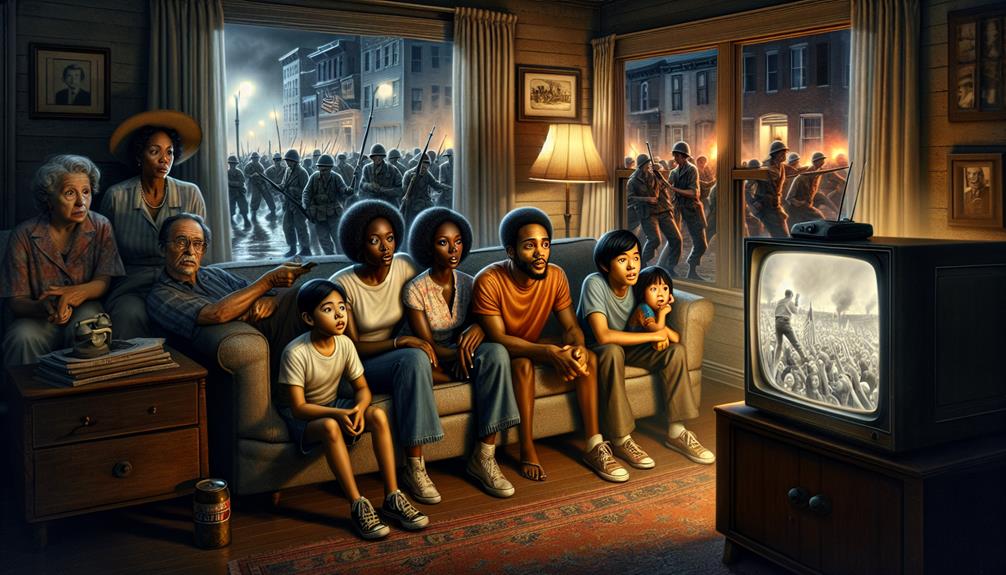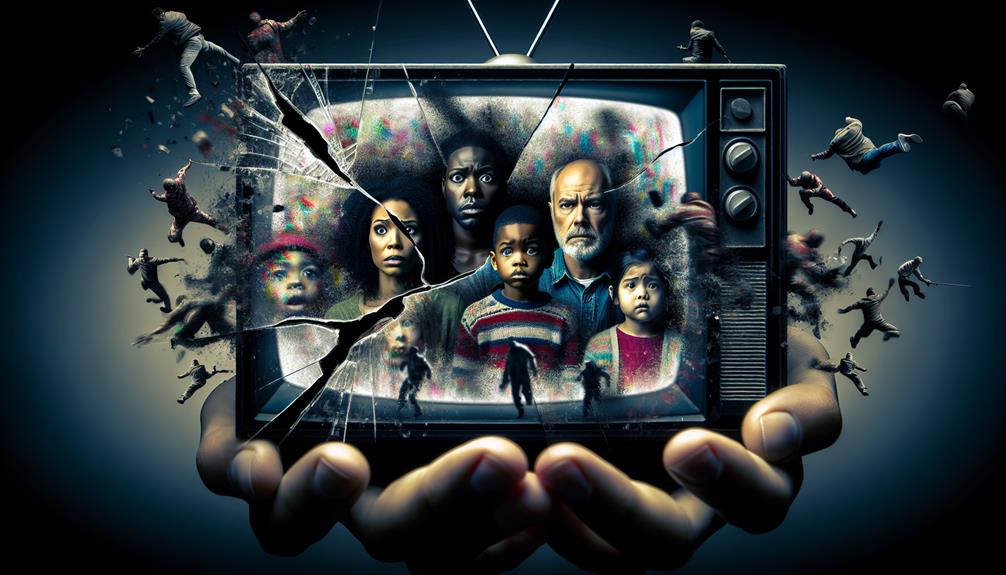Did you know the Vietnam War was one of the first where the brutality and chaos were broadcast into living rooms across the globe? As you explore how this unprecedented media coverage swayed public opinion, consider the power of seeing the raw realities of war versus government-filtered reports. How might this shift in media presentation have altered the course of political decisions and public sentiment during the 1960s and 1970s? Think about whether the lessons learned from this era are still relevant in today’s digital age where information, and misinformation, are even more accessible.
History of Vietnam War Reporting
The coverage of the Vietnam War began with a predominantly supportive stance from both the media and the government, mirroring initial public sentiment during the early 1960s. Early reports often emphasized U.S. military successes, aligning with the government’s narrative that framed the conflict as a necessary fight against communism.
However, as the war escalated and the realities on the ground became increasingly brutal, a significant shift in reporting began. Journalists, particularly war correspondents, started to present graphic, unfiltered images that starkly contrasted the more sanitized official accounts. This evolution not only transformed media coverage but also played a crucial role in reshaping public opinion and influencing policy decisions throughout the war.
Early Coverage
In examining the early coverage of the Vietnam War, it’s essential to consider the substantial influence of government control over media narratives. The U.S. administration employed stringent measures to manage information dissemination. For instance, the establishment of the Military Assistance Command, Vietnam (MACV) included Public Affairs officers who guided journalists, often restricting access to frontline realities.
This government control shaped not only the content available to the public but also limited journalists’ ability to report with full transparency. As a result, the early narrative largely omitted critical perspectives, such as those from Vietnamese civilians or dissenting voices within the military. Historical data shows that initial public support for the war was as high as 61% in 1965, reflecting the successful management of media narratives at that time.
Influence of Government Control
Government control significantly shaped early media coverage of the Vietnam War. Reporters faced restrictions that diluted the authenticity of the information reaching the public. This censorship not only influenced public perception but also had profound implications for political discourse and decisions surrounding the war’s conduct.
For example, the government’s restrictions prevented journalists from revealing the true scale of casualties and the war’s devastating impact on Vietnamese civilians, which would become more evident as independent reporting gained momentum. The shift in public sentiment became apparent by 1968, where support for the war dropped to 36%, as more unfiltered accounts emerged.
Shift in Reporting
As you analyze the shift in Vietnam War reporting, it’s clear that there was a remarkable rise in investigative journalism. Journalists began to adopt a more critical approach, challenging the official narrative and exposing discrepancies in government statements. This transition marked a pivotal moment for media coverage, where journalists like David Halberstam and Neil Sheehan played crucial roles in revealing the war’s complexities.
Halberstam’s reports in the New York Times questioned U.S. military successes, while Sheehan’s groundbreaking article on the My Lai Massacre unveiled the atrocities committed by U.S. forces, fundamentally altering public perception. The increase in investigative reporting not only informed the public but also spurred protests and debates regarding the war, leading to a decline in approval ratings for government decisions.
Rise of Investigative Journalism
The Vietnam War marked a transformative period for investigative journalism, emerging as a powerful force that shaped public discourse. Journalists began to delve deeper into the complexities of the war, uncovering narratives that went beyond combat, addressing political intrigue, societal consequences, and profound moral questions.
This shift challenged traditional perceptions of authority and truth. As Walter Cronkite famously stated after the Tet Offensive, the war was “mired in stalemate,” a declaration that had an immediate impact on public sentiment, illustrating the power of credible reporting. The rise of investigative journalism not only informed the public but also fostered a more robust dialogue about the implications of U.S. involvement in Vietnam.
Impact of War Correspondents
War correspondents played a pivotal role in shaping public perception of the Vietnam War, delivering unfiltered images and stories that brought the brutal realities of combat into homes across the globe. Graphic coverage of events like the My Lai massacre and the execution of a Viet Cong officer by South Vietnamese forces starkly contrasted the government’s more optimistic portrayal.
Such reporting forced the American public to confront the harsh realities of the conflict, leading to significant shifts in public opinion. The graphic footage shown on television, depicting napalm strikes and civilian casualties, contributed to a growing anti-war sentiment and a decline in trust toward the government.
Moreover, journalists like Cronkite, whose assessment of the war’s progress shifted public sentiment, highlighted the transformative potential of media. His declaration that the war was unwinnable resonated deeply with a populace already grappling with the moral implications of U.S. actions. This illustrates how media doesn’t merely inform but can also transform societal views and political landscapes, particularly in the context of war.
Role of Anti-Vietnam War Articles
As you examine the role of anti-Vietnam War articles, consider how these pieces criticized government policies. These articles not only scrutinized the justification and conduct of the war but also played a crucial role in influencing public perception.
They served as a pivotal platform for shifting views and fostering a broader anti-war sentiment among Americans.
Criticism of Government Policies
Media coverage critical of government policies during the Vietnam War profoundly influenced public opinion, challenging official narratives and exposing discrepancies in reported versus actual events.
You’d see journalists diverging from the government’s optimistic portrayals, highlighting the intense combat situations and the rising U.S. and civilian casualties. This stark contrast wasn’t just a matter of different perspectives; it was about bringing the harsh realities of war to the forefront.
Journalists like Seymour Hersh, who exposed the My Lai Massacre, played pivotal roles in this shift. The coverage didn’t stop at just reporting events; it scrutinized the justification of the U.S. involvement in Vietnam.
The Pentagon Papers, leaked by Daniel Ellsberg, revealed years of governmental deception not only to Congress but to the American public as well. This leak substantiated the skepticism about the war‘s supposed progress and objectives, which newspapers like The New York Times and The Washington Post were quick to underscore.
You might notice how these revelations spurred a broader questioning of authority. Media outlets, once aligned more closely with government versions, began adopting a more investigatory approach, digging deeper into the implications of U.S. foreign policy decisions.
This critical stance wasn’t about undermining government authority per se but ensuring accountability through informed public discourse.
Effect on Public Perception
You may find that anti-Vietnam War articles greatly influenced public perception by exploring a critical light on the conflict and questioning its legitimacy. These pieces often highlighted the discrepancies between official government statements and the realities on the ground. The stark images and firsthand accounts that accompanied these articles brought the war’s brutal realities into the living rooms of millions of Americans, fostering a growing skepticism about the justification and conduct of the war.
Journalists like Seymour Hersh, who exposed the My Lai Massacre, played pivotal roles in shaping this perception. Their reports not only disclosed the often-gruesome details of military engagements but also delved into the strategic and ethical failures of the war effort. This type of journalism prompted you to question the morality and necessity of continued U.S. involvement in Vietnam.
Furthermore, the consistent exposure to anti-war sentiments in the media contributed to a shift in public opinion, particularly among the youth, who became increasingly vocal in their opposition. This shift was measurable; opinion polls from the era show a significant decline in support for the war as the media coverage intensified.
The impact of these articles wasn’t just immediate emotional reactions but also a profound and lasting transformation in public opinion concerning the Vietnam War.
Impact of Articles on the Vietnam War
You’ll notice that articles published during the Vietnam War played an essential role in shaping international opinion.
This media coverage profoundly influenced anti-war movements by providing information that swayed public sentiment against the ongoing conflict.
These articles not only informed the public but also fueled global discourse and activism concerning the war’s legitimacy and impact.
Shaping International Opinion
Articles on the Vietnam War greatly impacted international opinions, shaping perceptions beyond the United States. As you explore the historical narratives and journalistic accounts, you’ll see how media outlets across various countries presented the complexities of the war, influencing global viewpoints and diplomatic stances.
The portrayal of the conflict’s brutality, including the use of napalm and the My Lai Massacre, often took center stage in newspapers and evening news, sparking international outcry and questioning of U.S. foreign policy strategies.
European and Asian media outlets, in particular, played pivotal roles. For example, British and French newspapers frequently highlighted the humanitarian crises and civilian casualties, which contrasted with the more strategic and politicized coverage often found in the U.S. This difference didn’t just inform, but also shaped how citizens and governments worldwide understood the war’s moral and ethical dimensions.
Furthermore, the accessibility of televised reports and photographic evidence brought the war into the living rooms of millions globally, making the distant conflict a tangible reality. This ongoing stream of information helped to mold international public opinion, compelling people to reassess their views on imperialism, warfare, and international solidarity.
Through these lenses, media coverage didn’t merely report the war; it became a formidable influence in the global discourse surrounding Vietnam.
Influence on Anti-War Movements
As media coverage shaped global perceptions, it also fueled powerful anti-war movements, particularly in the United States and Europe. You’ve likely seen iconic images and reports from this era that brought the harsh realities of war into living rooms, influencing public sentiment and escalating protests. This coverage didn’t just inform; it incited. You can observe how televised broadcasts and published photographs exposed the brutality of conflict and the human cost of war, elements previously shielded from the general populace.
The immediacy and shocking nature of the footage compelled you to confront the war’s realities. Reports on the My Lai Massacre, where hundreds of unarmed South Vietnamese civilians were killed by U.S. troops, serve as a pivotal example. This incident, heavily covered by global media, sparked widespread outrage and became a rallying point for the anti-war movement. It wasn’t just the scale of the protests, but their demographic diversity that you’d find remarkable. Students, religious groups, and veterans alike were united in their demand for peace, driven largely by what they saw and read in the media.
Thus, media coverage was instrumental in mobilizing public opinion against the war, showcasing its power to not only inform but also influence and motivate collective action.
Legacy of Vietnam War Reporting
As you reflect on the Vietnam War’s media coverage, consider how these historical insights serve as vital lessons for modern journalism.
The ethical dimensions of war reporting, illuminated by past experiences, offer a foundation for today’s media professionals to evaluate their responsibilities and methods.
Analyzing these legacies allows you to understand the profound effects that media can have on public perception and policy.
Lessons for Modern Journalism
From the legacy of Vietnam War reporting, modern journalism can draw significant insights on the profound impact of media transparency and frontline reporting on public perception and policy. You can see how real-time updates and uncensored news shaped the public’s view and ultimately influenced government decisions. This is important as you navigate the complexities of today’s digital and globalized media landscape.
Here are some key takeaways:
- Real-time Coverage: Vietnam War journalists provided timely updates that brought the harsh realities of war directly to the public. This has set expectations for instant news in modern times, emphasizing the need for timely yet accurate reporting.
- Impact on Public Opinion: The candid portrayal of the Vietnam conflict shifted public opinion significantly. Understanding this dynamic helps you gauge how current conflicts could shape societal views.
- Role of Visual Media: Iconic photographs and broadcasts from Vietnam galvanized public sentiment and showed the power of visual media, a lesson that remains relevant as you use images and videos to tell stories today.
- Government-Media Relations: The tense relationship between the media and government during the Vietnam era underscores the importance of maintaining journalistic independence, which continues to be an important consideration for you today.
These lessons underline the importance of maintaining integrity and objectivity in reporting, ensuring that the public remains well-informed in an era of information overload.
Reflections on War Reporting Ethics
Reflecting on the Vietnam War’s reporting practices, you must consider the ethical dimensions that continue to influence modern journalism. The media’s role in shaping public perception during Vietnam set precedents for transparency and accountability.
You’re now seeing how journalists balance the need to inform against potential national security risks. It’s vital to analyze how unrestricted access to battlefields and uncensored reporting introduced the public to the harsh realities of war, contrasting sharply with previous conflicts where coverage was more controlled.
This shift not only impacted public opinion but also raised questions about the impact of graphic content on viewers. You need to understand that reporting from war zones involves complex ethical decisions—deciding what to show, how much to reveal, and considering the potential consequences on public sentiment and policy.
Additionally, the legacy of Vietnam introduced the idea of the ‘living room war,’ where the battlefield was brought into American homes nightly, making you question the boundaries of intrusive reporting and the psychological effects on civilians.
As you reflect on these issues, it’s apparent that the ethical challenges faced during the Vietnam War continue to resonate, compelling journalists to navigate the fine line between thorough reporting and responsible journalism.




